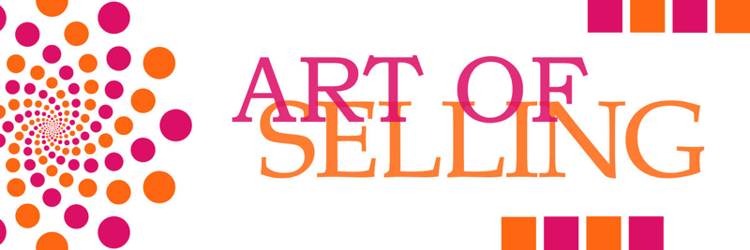Don’t Like Selling? Change How You Do It.
As the owner of a landscaping business, chances are you do everything from managing the books to driving the truck. And that includes sales.
If you’re like most people, selling doesn’t come easy – you’re uncomfortable asking for money and hearing “no” can be frustrating. As a result, sales might be your least favorite task. But I’m here to change your mind by arming you with a little knowledge and a proven way to make your sales efforts a success.

Let’s start with a few tips about how to alter your mindset and use my proven, step-by-step approach to selling:
- Change your “pitch”
It all begins by avoiding the word “pitch.” A true professional offering a legitimate service doesn’t have a “pitch,” they have a “proposition” that offers something of value people will want once they understand how it will truly benefit them and help them achieve their goals. Get away from the issue of money and and instead talk about the end result you’re going to provide that the prospect will love. Your proposition should be something you’re comfortable with so that you can talk easily and enthusiastically about it.
Remember, the potential customer in front of you wants to buy, they just need to be guided through the process of solving their problem.
- Be prepared
One of the worst things anyone can do is to go into a sales meeting without having thought through the elements of their solution and how they are going to present it. We often make the mistake of simply listing a bunch of products or services with prices on a piece of paper, giving it to the prospective client and expecting them to sell themselves on how these will provide a solution. We provide information, but not knowledge – prospective clients need to know how these products or services will help them get the end result they’re looking for.
Being prepared does NOT mean you need to write a script and memorize it or walk the client through a page-by-page presentation. Instead, think of it as telling a story. Be friendly and engage the prospect. Have a general introduction that can set the stage for the solution that follows. Tell them what you are going to tell them, tell them, then tell them what you told them. In between the telling, ask questions. Make sure you take the time to breathe between the telling and invite them to participate so you can uncover any objections that need to be addressed. The focus is on the solution, not the cost.
- Making the close
 Now that you’ve stated your proposition for achieving the client’s goal (example: “you mentioned you wanted to add a patio to your outdoor space and I’ve just showed you a wonderful way to do that with materials that blend beautifully with both your landscape and your home”), it’s time to connect that solution to an investment. Go ahead and ask the prospect about the solution you’ve just proposed: “How does that sound?” This question transitions them from the excitement of the solution to the path of attainment (what they need to invest to get it).
Now that you’ve stated your proposition for achieving the client’s goal (example: “you mentioned you wanted to add a patio to your outdoor space and I’ve just showed you a wonderful way to do that with materials that blend beautifully with both your landscape and your home”), it’s time to connect that solution to an investment. Go ahead and ask the prospect about the solution you’ve just proposed: “How does that sound?” This question transitions them from the excitement of the solution to the path of attainment (what they need to invest to get it).
Once you’ve said your piece, share the investment for attaining this solution, and asked how it sounds, stop talking and wait for their response. If it’s slow in coming, break the ice by saying something like “I can tell you’re thinking, may I clarify anything for you?” Then go silent again and wait for the answer.
- Yes or no answer
For you, the goal is to get a “yes” or “no” answer. Do NOT accept “maybe.” Consider a “maybe” as a “no.” Be sure to have at least one option available to share so that it’s easier for the potential client to say yes to something. For example, have a scaled-back variation of the proposed project that will reduce the scope of work and investment at this time. Remember – do NOT reduce the project investment without reducing the services and/or products provided (pay less, get less), otherwise prospects will assume that a little balking or haggling will get them a “price reduction” because “prices are always negotiable.” A ready willingness to cut the investment required to attain your well thought out solution is a sure way to find yourself in a pricing death spiral that eventually leaves you with very little – if any – profit.
Instead, a good option is to break up the project into phases to spread the work, and the expense, over time. Or provide a sell-down option in the form of a smaller project that’s acceptable to the client that you can later up-sell to the original proposal. That would sound something like this: “So I am getting the impression that $40,000 is a little much for you, is that right? What if there was another option where you could start with a smaller project? Let’s forget the fire-pit, at least for now, and just start with the patio.This gets you out into the yard, and you can still add the fire pit at a later time” The key is to BE PREPARED and do all your option-planning before you arrive to talk with the prospect. Identify a strategy that will give them what they want for now and then sell them the other services when the opportunity arises. It gives you the ability to increase your sales with your existing clientele once they’ve agreed to some version of a project.
- Ask for the sale
Some business owners are their own worst enemy because they believe they cannot close a sale if they are not fully prepared to handle it. This is a misconception. As a business owner, you need to be prepared with whatever is needed to close the sale if the prospect is clearly showing signs that they’re ready to say “yes.”
For example, if you’re discussing a front yard renovation project, have everything with you to sell and close before you arrive – this may include things such as a sales form with check boxes or a pre-sales form with an area to write a scope-of-work, general cost, timeline, and a pre-contract before the actual design has even started so that you can leave with something in hand. You may be agreeing to the general project scope and direction and on a budget of $40,000 but don’t know what the final design layout or materials costs will be yet. With this kind of pre-project documentation in hand, you now have what’s called an “up-front agreement” that ensures you have the project and the client’s buy in. Now you have the time to go back and forth with the project development details before signing the final installation contract.
This hesitancy about asking for the sale turned into a pivotal moment for me and led to the strategy outlined here. I unintentionally lost a sale to an existing client because I felt unprepared to close even though all the signs pointed to the client being ready to say yes. We were very excited about the project but I walked out of the meeting without a sale.
Fortunately, I had a business coach at the time who, when he heard this story, said “why didn’t you get a deposit?” I replied that I didn’t have a design yet. His answer was basically, “so what? The client was clearly ready to buy, so you should have agreed to the project and taken a deposit to close the deal. That would have bought you time to come up with a design they’d love.”
The point of this is to emphasize that when you’ve brought a prospect to the point they’re feeling really positive about working with you and they’re sending buying signals, You. Need. To. Close. Use the excitement of the moment and their positive emotion to close the deal, before the glow fades. I now challenge myself to actively look for prospect buying signals and then ask for the their up-front agreement to a project -- something I wasn’t doing before. If you start doing the same thing, your closing rate will go through the roof!
Landscape Business Owners Survival Guide



